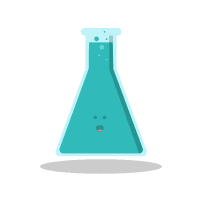
STAAR Science Grade 5 2015 - Past Paper
Quiz by Grade 5 Science - Texas Education Agency
Feel free to use or edit a copy
includes Teacher and Student dashboards
Measures 17 skills from
- edit the questions
- save a copy for later
- start a class game
- automatically assign follow-up activities based on students’ scores
- assign as homework
- share a link with colleagues
- print as a bubble sheet
- Q1
Many people ride a bicycle for fun and exercise. Some people ride a bicycle to work because it saves money and benefits the environment by reducing the use of fossil fuels.
Which of these is not an example of the bicycle using mechanical energy?
The front wheel guides the bicycle as it moves.The pedals, gears, and chain help turn the wheelsThe reflector allows the bicycle to be seen at night.The wheels turn when the bicycle moves.60s5.6a - Q2
A teacher gives a student four clear sealed containers. Each container holds a different substance. The student records some observations about the substance in each container.
Based on these observations, which container most likely holds only gas?
Container 1Container 2Container 4Container 360s5.5a - Q3A farmer keeps bees to pollinate crops. The farmer makes several observations about the bees. Which of these observations describes a learned behavior?Bees will sting when threatened or disturbed.Bees make return trips to drink sugar water from a bowl placed 40 meters from their hive.Bees have dark eyes and black-and-yellow stripes.Bees produce honey from the nectar they collect.60s5.10b
- Q4
A group of students built the circuit shown below.
The lightbulb does not glow. Which statement explains this observation?
The circuit does not have a switch.The battery is not charged.The bell uses most of the energy from the battery.The lightbulb is not part of a complete circuit.60s5.6b - Q5The whiskers of a river otter and the antennae of a cockroach are shown below. How do structures such as whiskers and antennae benefit organisms?None of theseThey help the organisms detect their surroundings.They help the organisms eat food quickly.They help the organisms fight predators.60s5.10a
- Q6A student looks into a mirror and sees an image of an object. Which diagram shows an X where the object is most likely located?60s5.6c
- Q7An energy company wants to build a hydroelectric power plant. Which of these characteristics of an area is most important to the development of a hydroelectric power plant?The area is located in a valley with very little wind and frequent heavy fog.The area has a river that flows rapidly from nearby mountains through a valley.The area has a cool, rainy climate.The area has no geysers or hot springs.60s
- Q8
Some students investigate the properties of four objects using a hand lens, a magnet, and a beaker containing water. Their observations are recorded in the table.
Which statement identifies a property that could be used to classify these objects into two different groups?
Density can be used to separate objects that sink in water from objects that do not.Solubility can be used to separate objects that dissolve in water from objects that do not.Physical state can be used to separate objects that are solids from objects that are not.Magnetism can be used to separate objects that are attracted by a magnet from objects that are not.60s5.5a - Q9An African savanna is a grassland with shrubs and a few small trees. It has warm temperatures all year long, a dry winter season, and a rainy summer season. Which group of animals is most likely supported by an African savanna?60s
- Q10Some characteristics of objects in the solar system are listed below. Which of the listed characteristics describe both Earth and the moon?60s5.8d
- Q11The table below lists ways that four organisms obtain energy. Which organism obtains energy without depending on another organism?Oak treeMushroomCottontail rabbitMountain lion60s5.9a
- Q12A student observed liquid wax dripping down the side of a burning candle. After putting out the candle’s flame, the student left the room. Several hours later the student observed that there was no longer any liquid on the side of the candle. Which statement explains what most likely happened to the liquid wax?None of the aboveThe liquid wax condensed and was absorbed by the candleThe heat given off by the flame caused the candle wax to evaporate.The liquid wax changed back into a solid as it cooled.60s
- Q13Which statement best describes the relationship between humans and plants in the carbon dioxide–oxygen cycle?Plants depend primarily on energy supplied by oxygen for photosynthesis, a process which releases carbon dioxide needed by humans.Humans depend on oxygen released into the air by plants, and plants depend on carbon dioxide that humans release into the air.Humans and plants use gases in the air and the energy of sunlight to produce their own food.Plants produce carbon dioxide as a product of photosynthesis and release it into the air to provide energy for humans.60s5.9d
- Q14
A student studies two Texas maps that showed some high temperatures for two days in October 2012.
How many degrees Celsius did the high temperature increase in the city that had the greatest change in high temperature? Be sure to use the correct place value.
Users enter free textType an Answer60s - Q1560s5.5c
